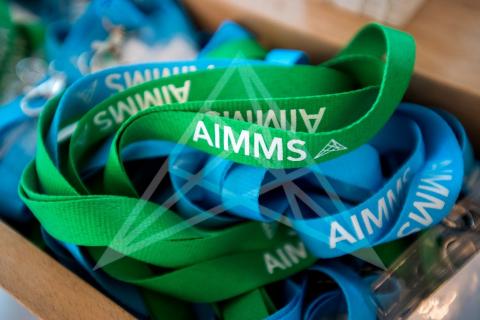
AIMMS and Districon enjoy an intensive and constructive partnership. Together with AIMMS, we presented several client cases at multiple international conferences. Apart from showing the added value of our work, the presentations also demonstrated our intensive collaboration.
The AIMMS summit on April 12th in Amsterdam was titled the 21st century paradigm shift. Several AIMMS users presented how they developed applications to improve their business control. Jack Pool, on behalf of Districon, presented an S&OP case, accompanied by one of our international clients. In just a few months we developed an S&OP application that supports a two-tier supply chain in Europe and the US. We shared our ambitions and our experiences during the development and implementation. See the after movie below.
Three days later we joined AIMMS at the INFORMS Business Analytics Conference 2018 in Baltimore. Sander van Lokven, general manager Districon North America and Gertjan de Lange, SVP Connecting Business & Optimization @ AIMMS, shared a story about The Intersection of OR and Data Science – Opportunities, Challenges, and Innovation
Sander presented two projects which combined data science and OR to improve the quality of the decision in a practical setting. The quality of output obtained from optimization models is dependent on the quality of the data used as input (garbage in is garbage out). In many practical settings, Data Science is used to improve the quality of the input data, leading to higher quality results. The first example presented by Districon considered the fashion industry. It illustrated the use of forecasting on product group level, and it showed how continuously improving data helps adjusting this forecast. The next step in this process is to involve machine learning techniques to take underlying patterns into account which are not spotted by the currently used statistical models.
The second example (profit-based business planning and scheduling @ Nampak) illustrated the use of Data Science in a decision-making process where the optimization output is reviewed. Output of multiple scenarios can be reviewed to make the best decision. An example is the comparison between a maximum profit scenario and a maximum customer satisfaction scenario. This review can be performed either automatically or manually. The review in the Nampak example was done manually, and the impact of the comparison was shown. In this case, it could lead to adjustment of constraints or the objective (e.g. maximize the customer satisfaction, given that the profit must be within 10% of the maximum profit output).
